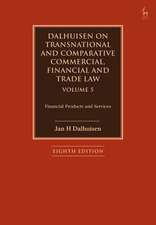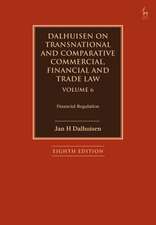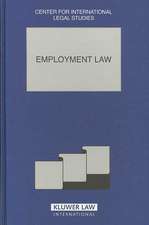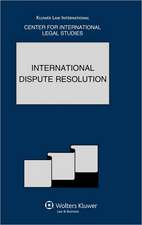Dalhuisen on Transnational and Comparative Commercial, Financial and Trade Law Volume 2: International Arbitration. The Transnationalisation of Dispute Resolution
Autor Jan H Dalhuisenen Limba Engleză Paperback – noi 2023
| Toate formatele și edițiile | Preț | Express |
|---|---|---|
| Paperback (1) | 320.53 lei 6-8 săpt. | |
| Bloomsbury Publishing – noi 2023 | 320.53 lei 6-8 săpt. | |
| Hardback (1) | 573.70 lei 6-8 săpt. | +126.33 lei 4-10 zile |
| Bloomsbury Publishing – 6 apr 2022 | 573.70 lei 6-8 săpt. | +126.33 lei 4-10 zile |
Preț: 320.53 lei
Preț vechi: 391.50 lei
-18% Nou
Puncte Express: 481
Preț estimativ în valută:
61.34€ • 63.80$ • 50.64£
61.34€ • 63.80$ • 50.64£
Carte tipărită la comandă
Livrare economică 14-28 aprilie
Preluare comenzi: 021 569.72.76
Specificații
ISBN-13: 9781509949274
ISBN-10: 1509949275
Pagini: 360
Dimensiuni: 169 x 244 x 25 mm
Greutate: 0.45 kg
Ediția:8
Editura: Bloomsbury Publishing
Colecția Hart Publishing
Locul publicării:London, United Kingdom
ISBN-10: 1509949275
Pagini: 360
Dimensiuni: 169 x 244 x 25 mm
Greutate: 0.45 kg
Ediția:8
Editura: Bloomsbury Publishing
Colecția Hart Publishing
Locul publicării:London, United Kingdom
Caracteristici
In this new edition the work is divided into 6 volumes, each of which can be used independently to delve into a particular topic, or as part of the complete set
Notă biografică
Jan H Dalhuisen is Professor of Law at King's College London, UK and Chair in Transnational Financial Law at the Catholic University in Lisbon, Portugal. He is Visiting Professor at the University of California at Berkeley and former Visiting Professor at the Tsinghua University in Beijing, the University of Hong Kong, the University of Singapore (NUS), Tel Aviv University, the University of New South Wales in Sydney, Australia, and the University of Utrecht in The Netherlands.
Cuprins
Part I International Commercial Arbitration 1.1. Introduction 1.2. The Process of Legal Transnationalisation. The Operation of the Modern Lex Mercatoria as Lex Arbitri. Transnational and Domestic Public Policy Considerations in the International Arbitral Process 1.3. International Arbitration: Initial Steps and Complications 1.4. The Conduct of the Proceedings and the Award 1.5. The Role of National Courts 1.6. The New York Convention. International Recognition and Enforcement of the Awards Part II International Financial Arbitration 2.1. Introduction 2.2. Building Blocks of Private Law in International Finance. The Applicable Law and its Transnationalisation 2.3. Financial Arbitration, Public Policy Concerning Financial Instruments, Regulation, and Remedies 2.4. Complications in International Financial Arbitrations 2.5. The Emergence of P.R.I.M.E. Part III Foreign Investment Arbitration 3.1. Introduction 3.2. The Basic Foreign Investment Protections. Direct Foreign Investors' Claims and the Role of Investment Arbitration3.3. The Applicable Law in Foreign Investments 3.4. Proprietary and Non-proprietary Takings 3.5. Dispute Resolution and the Transatlantic Trade and Investment Partnership (TTIP). The EU 2014 Questionnaire, Subsequent Action, and the EU/Canada Treaty (CETA) Part IV The Reasoning of International Arbitrators 4.1. Introduction 4.2.A Proper Perspective 4.3.Conclusions











